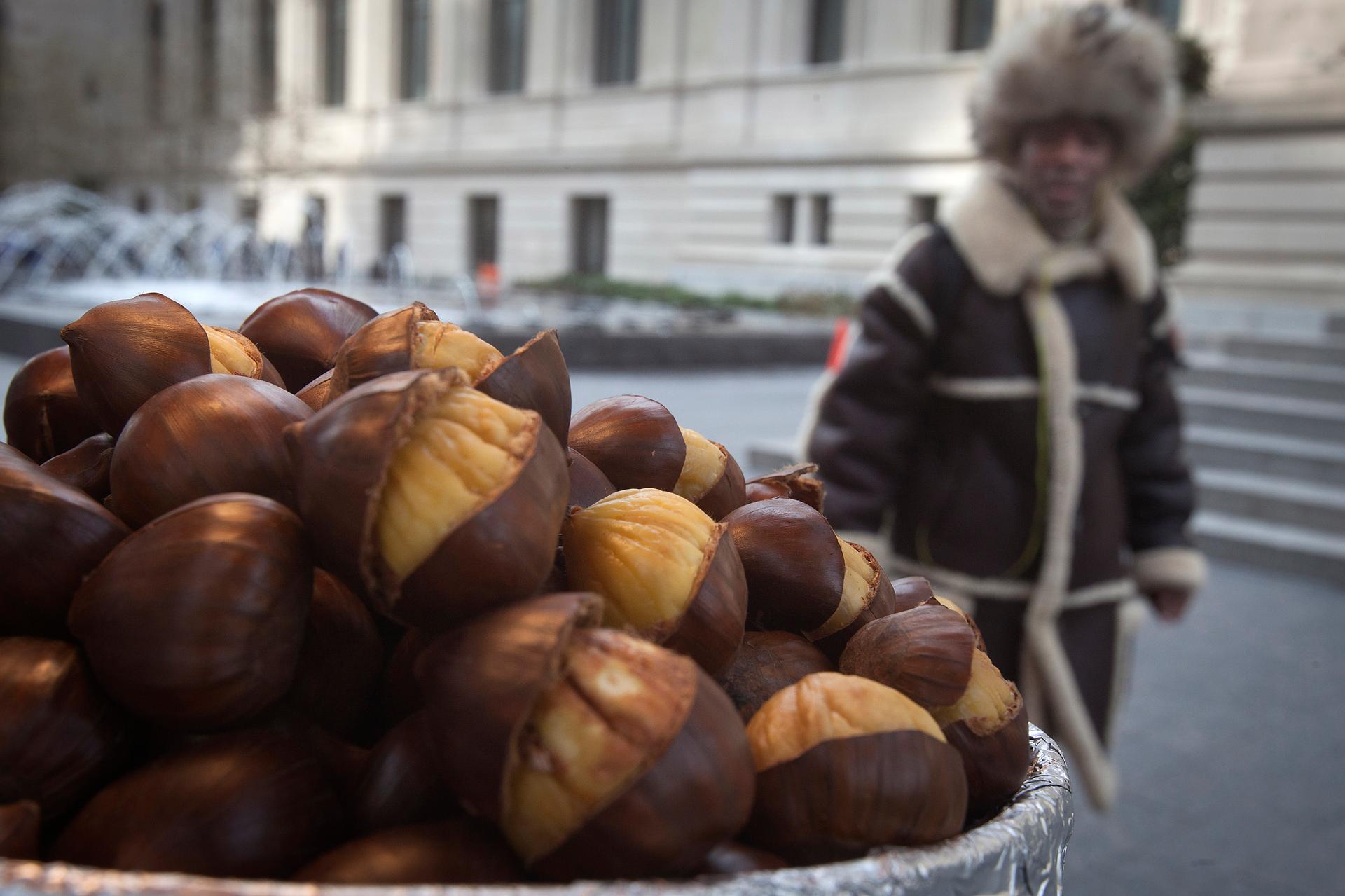How to make sure those are American chestnuts roasting on your fire
A man, bundled up against the cold, walks past a street vendor's chestnuts as they roast in front of the Metropolitan Museum of Art in New York.
If you’re roasting chestnuts on an open fire this holiday season, they’re probably not from an American chestnut tree, but rather a related European or Chinese species. The American chestnut, rather, has been “spiraling towards extinction" for nearly 100 years.
The native range of American chestnut trees used to cover some 200 million acres, spanning from southern Canada to northern Florida and as far west as the Mississippi River. But at the turn of the 20th century, a severe blight ravaged the population.
The culprit was an exotic fungus called Cryphonectria parasitica, which hitchhiked on imported Japanese chestnut trees that were resistant to the parasite. It spread across the American chestnut’s entire natural range in fewer than 50 years, infecting “close to 100 percent” of the population, says Charles Maynard, a professor at the SUNY College of Environmental Science and Forestry and co-director of its American Chestnut Research and Restoration Project,
The fungus infects trees by entering through wounds in the bark, explains William A. Powell, another co-director of the restoration project. “It will colonize that wound,” he says, where it starts producing acids — including oxalic acid, or oxalate — which kills the tree’s tissues.
After a couple weeks, the fungus also starts forming mycelial fans, “which are like mechanical wedges that help it pry into the tree tissues,” Powell says.
"The dead tree tissue and fungal mycelium together form a canker that spreads around the tree “until it finally girdles it,” says Powell. “It eventually cuts off all circulation up and down, killing everything above it.”
If the canker forms at the base of the tree, the tree dies down to the stump — but the roots can survive. Millions of stumps still cling to life, according to Powell. The tree can re-sprout, but “eventually that will get infected and get killed back down,” he says. “It's in a Sisyphus-like cycle.”
The first step was to find a blight-resistance gene that could be incorporated into the American chestnut's genome. Powell’s lab discovered a gene from wheat that makes an enzyme that detoxifies oxalic acid, breaking it down into chemicals that chestnut trees can metabolize.
"If you make enough of this enzyme, it will completely detoxify the oxalate,” Powell explains. “Therefore, no cankers are formed.”
Maynard’s lab, meanwhile, has focused on incorporating this gene into American chestnut embryos, which are eventually regenerated into whole plants.
The American Chestnut Restoration Project team announced in November that it successfully developed a blight-resistant chestnut. So far, 18 "events," or lines of trees, have demonstrated good blight resistance, Powell says, and the trees are growing in their test plots. The new trees are "99.996 percent American chestnut," Maynard says.
After the researchers whittle down the trials to find the most successful plants, they'll apply for approval from three regulatory agencies, including the FDA, the EPA and the Department of Agriculture. Powell and Maynard estimate the process will take about five years.
The goal is to integrate and cross-pollinate the transgenic trees with the few native ones still surviving in the wild in order to rescue the genetic diversity of the species. “We don't want to put out a clone of American chestnut,” Powell says.
And once approval is granted, they team plans to distribute the trees to the public as far and wide as possible. "We want to pass these out to whoever wants them,” says Powell. “We want the general public helping us plant these trees.”
This story is based on a blog post from PRI's Science Friday with Ira Flatow
